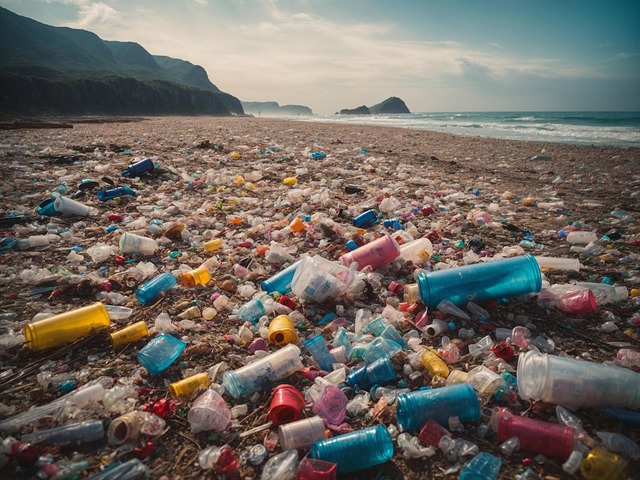
By Brigitte Rodriguez, Publishing Associate: Researcher and Writer at Save the Water™ | October 07, 2025
Edited by Shannon Hsieh, Publishing Associate: Editor at Save the Water™
Japan faces a big problem with plastic waste accumulating along its coasts, which threatens marine life and local communities. Cross-border plastic waste is a major concern, with around 35000 cubic meters of garbage reaching the shores of Tsushima. Most of its pollution comes from neighboring countries, while the rest is locally produced. Plastic waste does not stay in the country where it comes from; carried by sea currents, it moves across borders. Recent reports suggest that the rise in waste in aquatic systems is affecting public health and contaminating drinking water.
Strong ocean currents push trash from East Asian countries—mainly China, South Korea, and Taiwan—onto Japan’s shores. Plastic bottles, food containers, and fishing gear drift hundreds of kilometers before landing on beaches in prefectures like Nagasaki and Shimane.
Because Japan is both a contributor to and a victim of ocean plastic, it needs proactive cleanup campaigns.
Once in the ocean, sunlight and waves break larger plastics into tiny microplastics.
These particles can:
These particles create long-lasting contamination that harms marine ecosystems and puts public health at risk.
Here are some of the challenges in dealing with the plastic waste:
These limit the effectiveness of current technology and increase the need for innovation.
Japan has launched several initiatives to fight plastic pollution:
Despite these efforts, plastic waste continues to arrive daily, demonstrating the need for stronger regional agreements and upgraded treatment systems.
The plastic crisis in the Sea of Japan shows how water treatment and international cooperation must advance together. Without stricter waste reduction, improved filtration, and sustained cleanup campaigns, plastic pollution will continue to threaten clean seas, safe seafood, and the health of millions who depend on these waters.